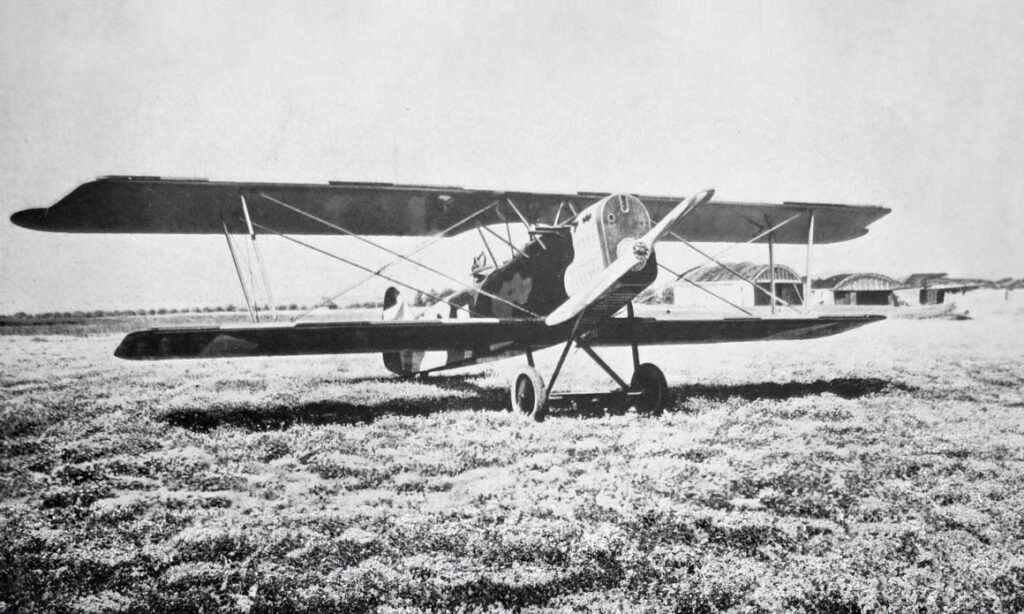Czechoslovakian biplane reconnaissance-bomber, the Aero A-11, served as a versatile 1920s design with a fabric-covered, mixed-structure. The article explores the Aero A-11, focusing on its historical significance, design features, performance metrics, and military role. It details the aircraft’s inception in post-WWI Czechoslovakia, technical specifications, operational abilities, and contributions to military aviation during its service life.
The period following World War I was characterized by significant advancements in aviation. In Czechoslovakia, a newly established state, there was a pressing need for the development of a strong military air force to ensure national security and independence. The Aero A-11 was developed in this post-war era to serve as a multi-role aircraft, capable of both reconnaissance and bombing.
History of the development of the Aero A-11
The Aero A-11 was developed in the early 1920s by the Aero Vodochody company, a pioneer in Czechoslovakian aviation. Its development was driven by the need for a modern aircraft that could fulfill a variety of roles, from reconnaissance to light bombing, reflecting the multifaceted demands of the time.
Czechoslovakia, having gained independence after WWI, faced the challenge of building its military capabilities, including an effective air force. The A-11 was intended to be a part of this force, serving as a reliable and versatile aircraft that could adapt to various military needs.
Launched by Aero Vodochody in 1923, the program aimed to produce an aircraft that could operate in the diverse terrains of Czechoslovakia, from mountainous regions to plains. The A-11 first flew on May 10, 1923, and was a manifestation of the emerging Czechoslovak aviation industry’s capabilities.
Design of the Aero A-11
The Aero A-11 was a conventional biplane design of its era, with two main wings stacked one above the other and braced with wires and struts. It had a mixed construction, with a wooden frame and a fabric cover, which was a standard practice of the time. The aircraft had a length of 27 feet 10 inches (8.48 meters) and a wingspan of 39 feet 4.5 inches (12 meters).
Powered by a water-cooled, in-line BMW IV engine, the A-11 produced around 240 horsepower. The choice of a water-cooled engine over the more typical air-cooled radial engines of the time gave the A-11 a cleaner aerodynamic profile, potentially improving its speed and range.
Advantages of the A-11 included its robust design and versatility. However, as a biplane with a fabric cover, it faced limitations in speed and could not compete with the emerging all-metal monoplanes. Yet, its design simplicity allowed for easier maintenance and repair.

Performance of the Aero A-11
The Aero A-11’s BMW IV engine allowed it to reach a maximum speed of approximately 105 mph (169 km/h), with a service ceiling of around 19,685 feet (6,000 meters). It had an operational range of 373 miles (600 kilometers), adequate for its reconnaissance and light bombing missions.
When compared to other aircraft of the era, the A-11 was not the most powerful, but its performance was sufficient for the roles it was designed for. It was outpaced and outperformed by newer designs as the 1920s progressed, yet its serviceability and adaptability were its strengths.
Military use and combat of the Aero A-11
The Aero A-11 was armed with machine guns and had the capacity to carry a modest bomb load. It served primarily with the Czechoslovak Air Force, where it was used in the reconnaissance and light bomber roles. Its military effectiveness was shown in various military exercises and potential border skirmishes, but it did not see combat on the scale of World War I.
The aircraft did not engage in extensive conflicts but was part of Czechoslovakia’s strategic military buildup during the interwar period. It did not face many direct competitors domestically, as it was one of the few aircraft designed and produced by the Czechoslovak aviation industry for such roles.
There are no records of the Aero A-11 being sold to other countries or being used by other air forces. Its service life was overtaken by more advanced aircraft as technology progressed. By the time it was retired, the Aero A-11 had been replaced by more modern and capable aircraft such as the Aero A-101, another Czechoslovak design that offered better performance and capabilities.
The Aero A-11 stands as a testament to the burgeoning Czechoslovakian aviation industry of the 1920s. As a multi-role biplane, it played a crucial role in shaping the country’s air defense capabilities during a period of significant political and technological change. While not the most advanced aircraft of its time, the A-11 was valued for its reliability and flexibility, serving as a cornerstone upon which Czechoslovak military aviation could build its future.
Back to the Bombers section.